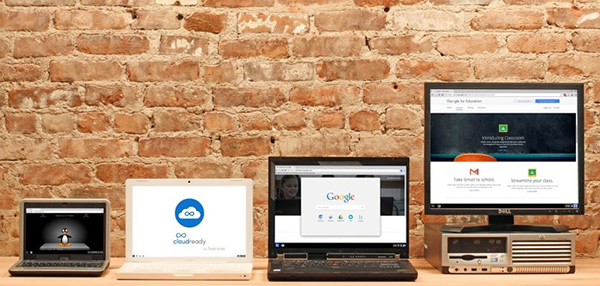CloudReady is an operating system based on Chromium OS, the open-source based on which the basic software of Google's Chromebook. Developed by Neverware, has the task of resurrecting the old PC or Mac rendered inoperable by time. The New York-based startup offers him a small price to schools, but allows individual users to download it for free. Through a recent CloudReady update you can also be installed in dual-boot with another OS.
In short we could say that CloudReady transforms an old laptop or MacBook into a Chromebook. But it would be a misnomer since the term belongs to a brand registered by Google and identifies certain licensed products. The term used to define a laptop with CloudReady is in fact notebook Chrome or Chromium notebook. In any case, the experience of use of the Neverware operating system is not very different from that of a Chromebook.
Even the owners of Google services pre-installed natively work smoothly, all while providing the proverbial lightness of the Mountain View OS. Chrome OS is indeed rated to operate with ease on less powerful machines, so it is probable that a notebook of 10 or 15 years ago is more than enough to handle it with no problems. It is equally likely that your old notebook is even more powerful than the average Chromebook currently for sale.
CloudReady takes the heart of Chromium OS and on traditional PC port, but also brings with it all the limitations of the operating system based on the cloud. It is for this reason that Neverware now gives the ability to run the software in a dual-boot with another operating system, be it Windows or Mac OS X, in order to give the opportunity to users to choose the performance of Chrome OS or compatibility of traditional operating systems.
In short we could say that CloudReady transforms an old laptop or MacBook into a Chromebook. But it would be a misnomer since the term belongs to a brand registered by Google and identifies certain licensed products. The term used to define a laptop with CloudReady is in fact notebook Chrome or Chromium notebook. In any case, the experience of use of the Neverware operating system is not very different from that of a Chromebook.
Even the owners of Google services pre-installed natively work smoothly, all while providing the proverbial lightness of the Mountain View OS. Chrome OS is indeed rated to operate with ease on less powerful machines, so it is probable that a notebook of 10 or 15 years ago is more than enough to handle it with no problems. It is equally likely that your old notebook is even more powerful than the average Chromebook currently for sale.
CloudReady takes the heart of Chromium OS and on traditional PC port, but also brings with it all the limitations of the operating system based on the cloud. It is for this reason that Neverware now gives the ability to run the software in a dual-boot with another operating system, be it Windows or Mac OS X, in order to give the opportunity to users to choose the performance of Chrome OS or compatibility of traditional operating systems.
Who wants to give a chance to CloudReady can download it for free at this address. On the page you can access a detailed guide, in which are explained step by step all the procedures necessary for installation. naturally we suggest the operation only for advanced users who are familiar and experienced with this type of operation.

Comments
Post a Comment